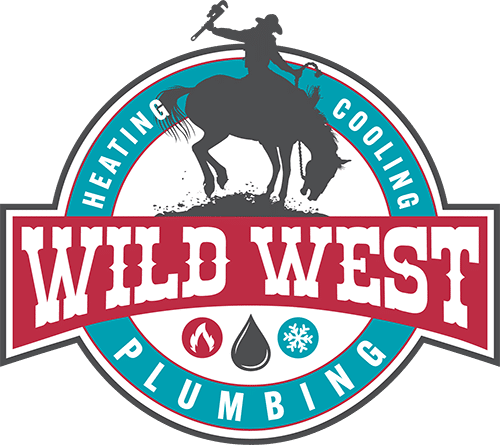A clogged drain is an annoying but frequent plumbing problem that, if ignored, can cause major disruptions to everyday life. It can also lead to expensive repairs down the road. To keep a plumbing system running smoothly, knowing what causes clogs and how to effectively remove them is essential.
Top Causes of Clogged Drains
Depending on where you live, there may be certain environmental factors that increase the risk of clogged drains. If you reside in Kalispell, MT, the region’s unique characteristics, such as its climate and geographical features, play a role in shaping potential challenges for plumbing systems. Hard water deposits, freezing temperatures, tree roots, seasonal debris and DIY landscaping practices all contribute to plumbing problems for local homeowners.
Hair
You must keep drains clean of hair accumulation. As the hair collects, it clogs the drains, leading to backups and overflows. Using hair-catching drain screens or traps is an easy way to avoid the problem altogether.
Soap Scum
A buildup of soap, minerals, oils from the body and soap scum can block drains. The calcium and magnesium compounds found in soap scum combine with the minerals found in hard water can create a deposit that is difficult to remove. The buildup of this residue on the inside of pipes eventually narrows their diameter and creates problems with drainage. Use a moderately acidic solution like vinegar or baking soda regularly to keep drains clear of soap residue to help prevent clogs.
Grease and Fat
Pouring greasy or fatty substances down the drain will eventually lead to clogs. These chemicals stick to the inside of pipes even though they seem liquid when heated. But when cooled, they solidify. This accumulation eventually causes clogs and decreased water flow due to the gradual narrowing of the pipe’s interior. Proper disposal of grease and fats, including collecting them in a container and throwing them in the trash, is essential for preventing blockages.
Mineral Buildup
Mineral buildup in pipes, commonly known as limescale or scale deposits, occurs when minerals like calcium and magnesium accumulate over time. In areas with hard water, these minerals can form stubborn deposits on the interior of pipes. As the buildup thickens, it narrows the pipe’s diameter, restricting water flow and leading to clogs. To prevent mineral buildup, it may be necessary to install a water softener to reduce the hardness of the water. Regular cleaning and maintenance also help mitigate scale deposits, ensuring optimal water flow and minimizing the risk of clogged drains.
Tree Roots
In their quest for water, tree roots sometimes find their way into subterranean pipelines, particularly via tiny cracks and crevices. These roots can obstruct drainage and cause blockages when they spread and enter the pipes. To discover root incursions early, a licensed plumber must examine and maintain pipes regularly. Once identified, professional root removal procedures like hydro-jetting or mechanical cutting may be necessary to remove the roots and avoid further obstructions.
Collapsed Pipes
Collapsed pipes can result from various factors, such as aging, corrosion or external pressure on the pipes. When pipes collapse, they create obstructions that hinder the flow of wastewater, leading to persistent drain clogs. Soil shifts, heavy machinery and gradual wear and tear can contribute to pipe collapse. Detecting collapsed pipes generally requires professional inspection techniques, like video camera inspections. Timely identification and replacement of damaged pipes are crucial to preventing recurrent clogs and ensuring the smooth operation of the drainage system.
What Methods Are There to Clear Clogged Drain Pipes
You should never attempt to fix a clogged drain yourself. Instead, it’s best to call a licensed plumber. This way, a professional can inspect the situation, determine the cause and apply the appropriate remedy. Depending on the cause, a plumber may use any of the methods listed below to clear a clogged drain.
Snaking or Augering
Plumbers commonly use snaking or augering techniques to address various drain clog scenarios. Snaking, or drain snakes, involves inserting a flexible cable with a coiled end into the drain. This method is effective for dislodging and breaking up clogs caused by debris, hair or soap scum. Augering, on the other hand, employs a rotating helical screw to break up and remove obstructions like grease or tree roots. Plumbers choose between these methods based on the nature and location of the clog. This allows them to tailor their approach to provide efficient and targeted solutions for different scenarios.
Hydro Jetting
In many cases, hydrojetting is the most effective method for unclogging drains. It works especially well for more stubborn clogs, such as those produced by mineral deposits, tree roots or grease. The process of hydrojetting entails forcing water at high pressure down the drain to dissolve and wash out the blockage. Its adaptability enables plumbers to clean drains during emergencies and as a preventative measure.
Enzyme Drain Cleaners
For less serious blockages or as a preventative precaution, plumbers commonly use enzyme cleaners. The natural enzymes in these cleansers work by decomposing organic substances, such as hair, soap scum and food particles, which aid in the removal of small obstructions. Because they are usually biodegradable and acceptable for septic systems, enzyme cleansers are great for homeowners looking for environmentally friendly solutions. Consistent usage lessens the probability of serious plumbing blockages and keeps drains clear.
Chemical Drain Cleaners
Plumbers will use chemical drain cleaners when they need to be more forceful in dissolving obstructions. A chemical cleaner, in contrast to an enzyme cleaner, uses chemical reactions to dissolve obstructions. These compounds are usually harsh and caustic. Not only that, they work on a wider variety of materials, even the most stubborn blockages, such as hair and grease. Nevertheless, these chemicals are strong, so you need to be cautious while handling them. Plus, they may wear out the pipes over time.
Video Inspection
Video inspections help plumbers locate and diagnose drain obstructions. Plumbers can see the blockage’s nature and position in real-time thanks to the images and recordings. These inspections are particularly of value when finding problems like root invasion, damaged pipes or collapsed parts. After assessing the situation with a video inspection, the plumber can choose which type of drain cleaning solution to use.
Bacterial Drain Cleaners
Plumbers use bacterial cleansers when organic debris, such as hair and soap scum, blocks drains. The good bacteria in these cleansers break down the organic waste into harmless byproducts as they devour it. Bacterial cleaners are safer for the environment than chemical ones since they do not cause corrosion. Their reproductive capabilities allow them to establish a permanent microbial colony in the pipes, setting them apart from enzyme cleaners. This continuous process helps avoid blockages in the future.
Have a clogged drain? Call Wild West Plumbing, Heating & Cooling. We offer drain cleaning, sewer repair, and indoor air quality testing, In addition, we also offer furnace repair, installation, maintenance as well as cooling services. To learn more about keeping your home’s drain clear of clogs, contact Wild West Plumbing, Heating & Cooling now.


